I Went to New York in Search of the City’s Lesser-known 'Little Italy' — Here Are the Best Delis, Shops, and Restaurants
For more than a century, Arthur Avenue has thrived as the heart of New York City’s other Little Italy. Though the area keeps evolving, the meals—and the stories—remain as delicious as ever.
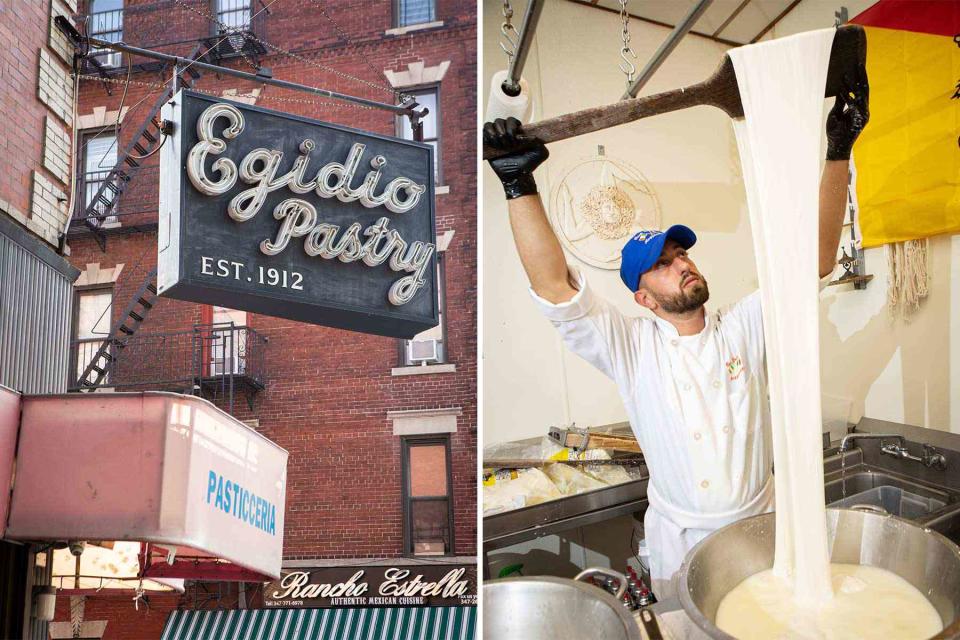
Clay Williams
From left: Egidio Pastry, Arthur Avenue’s oldest sweets shop; Above, from left: making cheese at Casa Della Mozzarella.On a typical Saturday morning at Casa Della Mozzarella, in the Bronx, a line winds out of the door and down East 187th Street, past Full Moon Pizzeria and around the corner onto Arthur Avenue. Inside, customers pack the shop’s narrow corridor, calling out their orders: a pound of capicola; a container of Gorgonzola-stuffed olives; a wedge of primo sale (a mild sheep-milk cheese) with black peppercorns.
I’ve come for the eponymous delicacy—fresh mozzarella. In a tiled room in the back of the store, Orazio Carciotto and his son Carlo press fresh cheese curds through a slicer called a chitarra into a stainless-steel bowl. Orazio pours in boiling water and stirs, first clockwise, then counterclockwise, with a heavy wooden paddle, until the chunks melt into silken folds. He gathers the molten cheese into plump orbs while Carlo twists shorter lengths into bite-size knots. One by one Carlo drops these bocconcini into a sink full of running water. He hands one to me and I take a bite. It’s warm and salty and milky. “You start with a blank canvas—just the curds—and you stir and you blend and you mold and it becomes a work of art,” Carlo says.
Related:
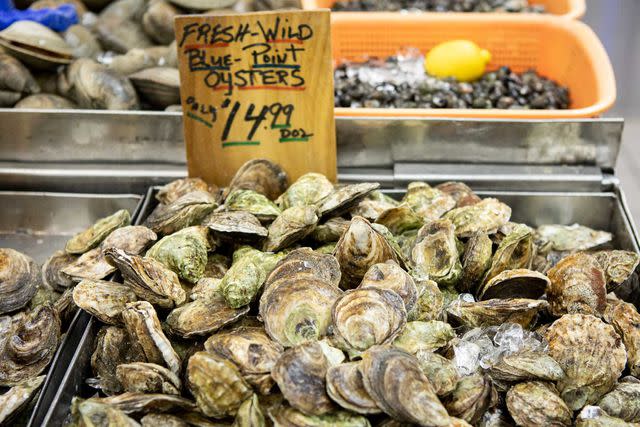
Clay Williams
Bluepoint oysters at Randazzo’s Seafood.For me, the Belmont neighborhood in the Bronx is today’s true Little Italy. Spread out over more than six square blocks, this historic immigrant enclave is a far cry from the red-sauce joints and soggy cannoli that typify Mulberry Street in Lower Manhattan. On Arthur Avenue, I can slurp down just-shucked littlenecks at the sidewalk raw bar outside Randazzo’s Seafood, choose fat coils of house-made cervellata sausage at Peter’s Meat Market, pick up a humble loaf of pane di casa from Addeo Bakery, and catch up on the gossip while waiting for pasta, cut to order and sprinkled with semolina, at Borgatti’s Ravioli & Egg Noodles.
“This is a place where you have multiple generational businesses,” says Peter Madonia, whose family has been baking bread at Madonia Brothers Bakery since 1918. “Businesses that our parents, our grandparents, and in some cases our great-grandparents, opened. There’s just a sort of organic authenticity that you can’t make up.”
It was the creation of the New York Botanical Garden and the Bronx Zoo at the end of the 19th century that brought the Italians to the neighborhood. Laborers were needed to landscape the grounds and construct stone buildings—work that appealed to the many Italian immigrants streaming into New York in the late 1800s.
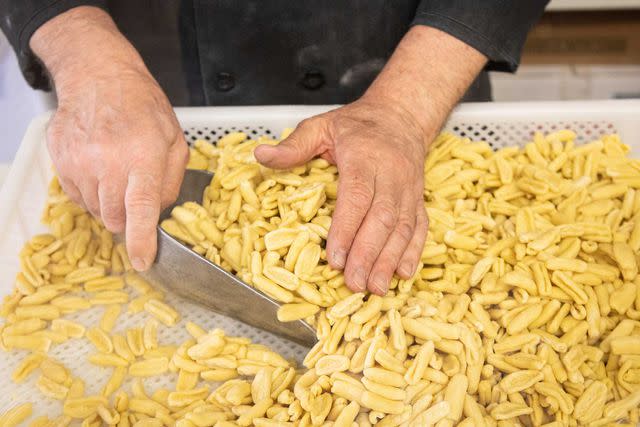
Clay Williams
Cavatelli at Borgatti’s.I grew up visiting Arthur Avenue. It was one of my grandfather’s favorite places. Beeps, as we all called him, drove down at least once a month from his home near New Haven, Connecticut. I sometimes accompanied him on those trips, tagging along as he procured fat prosciutto ends for my grandmother’s minestrone.
Now I make my own monthly pilgrimages to Belmont from my home in Westchester County, New York. Like many Arthur Avenue patrons, I have my favorite spots, but my loyalties to one never keep me from shopping at the others. I always start at Teitel Brothers, a third-generation grocery opened in 1915 by Morris and Jacob Teitel, Jewish tailors who emigrated from Austria and got into the business after working in their cousins’ place on the Lower East Side. A mosaic Star of David has marked the store’s threshold since the Depression. “The landlord told my father that if people knew we were Jewish, they wouldn’t shop here,” Gilbert Teitel, Jacob’s son, explains. “The star was his statement. He wanted people to know who he was.”
Today Gilbert runs the grocery with his sons, Jean, Michael, and Eddie, and Eddie’s childhood friend Billy Fassbender. Each morning, they arrange a cornucopia of provisions on the corner of East 186th Street and Arthur Avenue: gallons of imported olive oil, towers of canned San Marzano tomatoes, bins of dried cannellini beans and chickpeas, jars of hot cherry peppers.
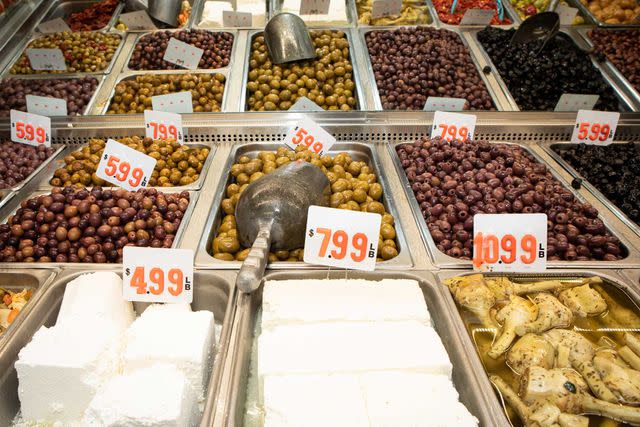
Clay Williams
Olives by the pound at Teitel Brothers grocery.Inside, the trove continues. I choose a dozen marinated artichoke hearts; some red, black, and green Cerignola olives; and a mild soppressata from the assortment of dry salami that hangs over the counter. Michael Teitel cuts two one-pound pieces of Parmigiano-Reggiano from a huge wheel and presses one into the store’s old-fashioned grater. “You want the rinds?” he asks. I nod, thinking of the rich umami they’ll add to my white-bean and escarole soup. He puts the waxy shards into a bag and adds it to my pile.
The robust scent of garlic and fennel mixed with provolone and tobacco welcomes me to the Arthur Avenue Retail Market, one of the last remaining examples of the municipal markets created by Mayor Fiorello LaGuardia beginning in the 1930s as part of his campaign to get pushcarts off New York’s congested streets. When it opened in 1940, the market housed 117 vendors. Today, though the bazaar houses only eight merchants, the atmosphere remains vibrant. I pass Peter’s Meat Market, the Bronx Beer Hall, Boiano Food, and Mike’s Deli, where a handful of New York firefighters, in their distinctive suspendered pants, are waiting to order lunch.
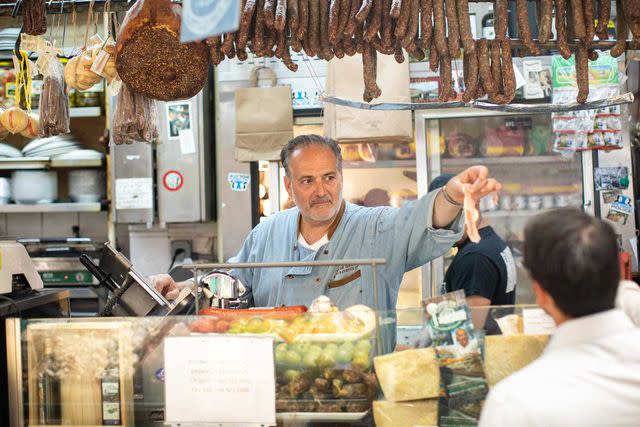
Clay Williams
Dave Greco of Mike’s Deli.At the counter of Mike’s Deli, owner Dave Greco greets me with a smile and an enthusiastic “Ciao bella!” Greco took the helm of the famed salumeria in the 1990s after having worked alongside his father, Mike, a Calabrian immigrant with a passion for singing Italian arias as he sliced prosciutto. Mike died in 2019, but the younger Greco keeps his spirit alive.
Over the years, many Italian families moved to the surrounding suburbs, but kept their businesses in the Bronx. Today, more recent immigrants—from the Middle East, the Dominican Republic, and Mexico—call the neighborhood home, and that heterogeneity has infused Belmont with a renewed dynamism.
“Having other cultures in our community doesn’t preclude us from being Little Italy,” says Frank Franz, a lifelong resident who serves as treasurer of the Belmont Business Improvement District. “We’re Little Italy because the Italian heart and soul and tradition still lives here.”
A version of this story first appeared in the September 2022 issue of Travel + Leisure under the headline "A Bite of the Bronx."
For more Travel & Leisure news, make sure to sign up for our newsletter!
Read the original article on Travel & Leisure.

